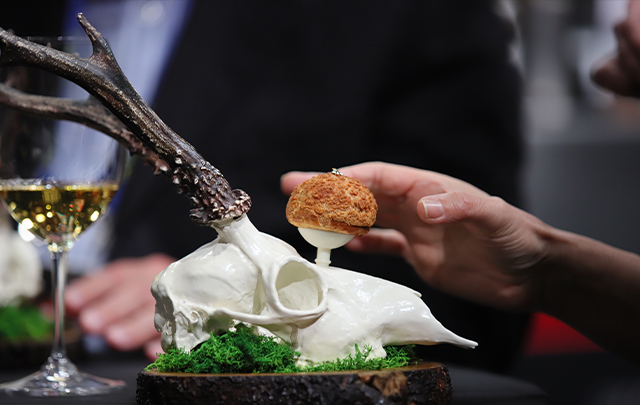News
The emotions that drive menus

The intersection of artificial intelligence and hospitality has given rise to the sensory table, where diners' sensations are measured before a dish is served
Sitting at a table, the senses become a fundamental part of the diner's experience. The sensory table, the result of two years of research carried out by Itainnova, in collaboration with the Huesca Hoteliers' Association, represents an important milestone at the intersection of artificial intelligence (AI) and the hospitality industry, and has been created to study the customer's reaction and how he/she deals with the experience before the dishes.
This tool has been designed with an innovative approach that focuses on analysing and interpreting the emotions of diners in restaurants, in order to be able to evaluate new dishes or new ways of presenting them. "It helps us to know which is the best or worst dish, depending on the emotions it evokes in the diner", says Josetxo Souto, chef at Callizo* (L'Aínsa, Huesca), with Ramón Aso.
The sensory table measures "surprise, displeasure, tension, happiness, and neutrality" to find out how the diner reacts to the food on the table. "But it is not only the dish that matters", insists Cristian Palacio, chef at Gente Rara* (Zaragoza), at Madrid Fusión Alimentos de España, "because what they are going to eat is just as important as explaining and telling them what they are going to eat, because it is something that predisposes them to face the dish in one way or another", he adds.
With four diners who underwent the test of enjoying a menu prepared for the occasion, the sensory table marked their sensations, "although the environment is not the best", they clarified. "Talking about blood in the dishes provokes an emotion of surprise or even displeasure, which can vary if you hide the ingredient when explaining the dish," revealed Cristian Palacio. In fact, one of the suggestions he made, which he simply referred to as "the dessert", was welcomed by the guests. A reaction that changed when he revealed that the dessert did not contain eggs, and had been replaced by blood.
When the experience is over, the results of the sensory table are analysed to find out which dishes were more or less popular, "although it is also important to understand that some people do not react to a food in the same way as others". "It is another tool for the restaurant to get to know its customers, and to know if the emotions they have experienced are similar to those expected when the dish was created", concludes Souto.
